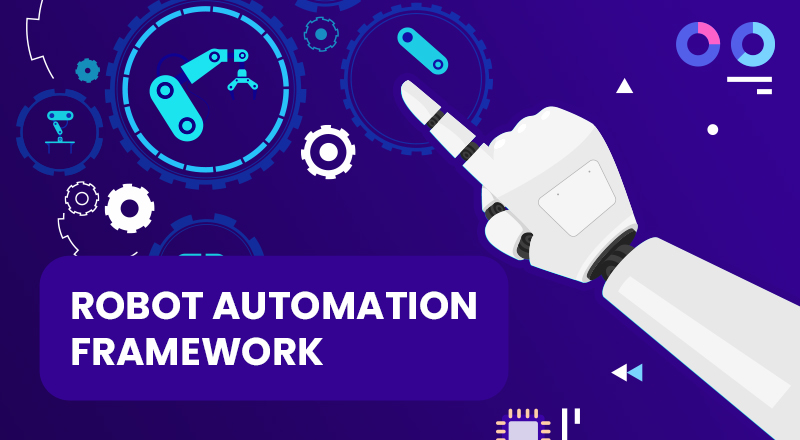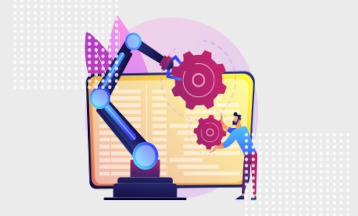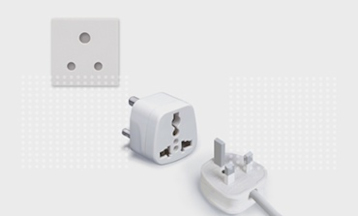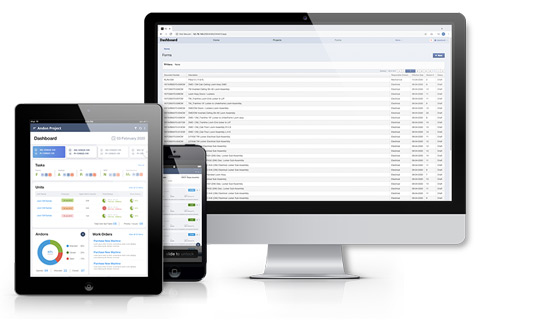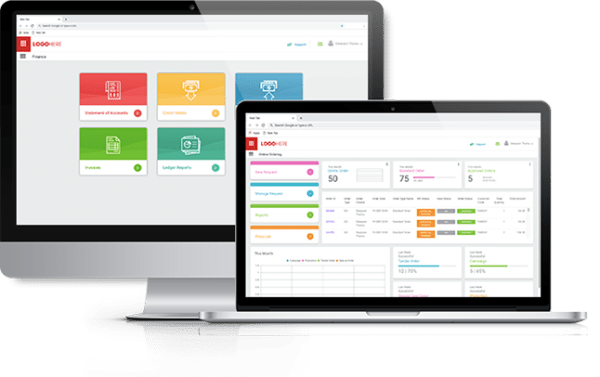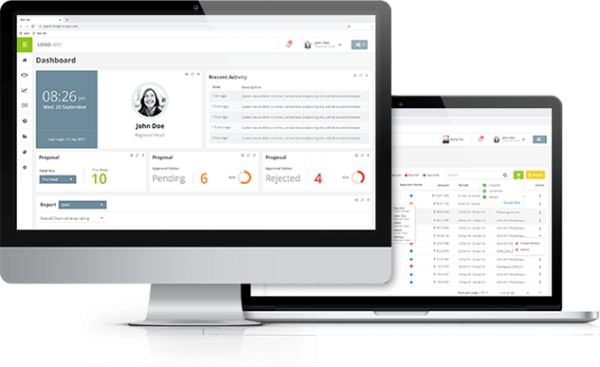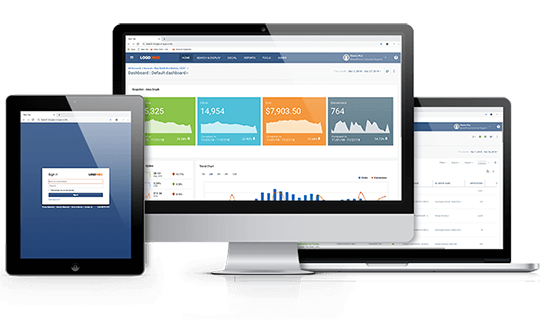In recent years, the field of Artificial Intelligence (AI) has witnessed a remarkable evolution, particularly in the realm of generative AI. This cutting-edge technology holds immense potential to transform industries, drive innovation, and unlock new possibilities across various domains. In this blog, we delve into the captivating realm of Generative AI, exploring its capabilities, applications, and the transformative impact it can have in today’s world.
Understanding Generative AI
Generative AI is a subset of artificial intelligence focused on creating new data rather than just analyzing existing data. It harnesses the power of neural networks to learn and replicate patterns observed in data, enabling it to produce novel and realistic outputs that mimic human creativity.
Artificial Intelligence (AI) has witnessed a paradigm shift with the emergence of Generative AI, which now uses machine learning algorithms to train on massive datasets of text, code, images, or audio.

There’s no doubt that Generative AI is already weaving its magic across various fields by creating a world where AI can compose music that rivals the masters, craft realistic paintings indistinguishable from human work, and streamline software development through code generation. This is the exciting promise of Generative AI, to redefine countless industries.
Yet, it is important to remember that it is not a silver bullet. Though intuitive and powerful, generative AI comes with its own set of drawbacks.
Let’s take a deeper look at Generative AI’s prominence, the challenges it poses, and explore some of its use cases.
Benefits of Generative AI
• Ethical Concerns: AI raises ethical questions related to privacy, bias, job displacement, and decision-making accountability.
• Data Quality: AI performance heavily depends on the quality and quantity of training data, which can be a challenge to obtain.
• Complexity: Developing AI systems requires specialized skills and knowledge, making it complex and costly.
• Regulatory Compliance: Compliance with regulations such as GDPR and ethical guidelines can be challenging for AI developers.
• Interpretability: AI models can be black boxes, making it difficult to understand their decisions and actions, leading to trust issues.
• Security: AI systems are vulnerable to attacks, such as adversarial examples or data poisoning, requiring robust security measures.
• Bias and Fairness: AI can perpetuate or amplify biases present in data, leading to unfair outcomes and societal issues.
Challenges of Generative AI
• Ethical Concerns: AI raises ethical questions related to privacy, bias, job displacement, and decision-making accountability.
• Data Quality: AI performance heavily depends on the quality and quantity of training data, which can be a challenge to obtain.
• Complexity: Developing AI systems requires specialized skills and knowledge, making it complex and costly.
• Regulatory Compliance: Compliance with regulations such as GDPR and ethical guidelines can be challenging for AI developers.
• Interpretability: AI models can be black boxes, making it difficult to understand their decisions and actions, leading to trust issues.
• Security: AI systems are vulnerable to attacks, such as adversarial examples or data poisoning, requiring robust security measures.
• Bias and Fairness: AI can perpetuate or amplify biases present in data, leading to unfair outcomes and societal issues.
Now that we’ve explored the advantages and obstacles, let’s look at how generative AI is used creatively in different industries and its real-world applications.
Before we move to the applications of generative AI, a key aspect to keep in mind is the importance of giving the right prompts to the AI tools. The way you craft your prompt can influence the style and tone of the AI’s output. A well-crafted prompt provides clear context and instructions to the AI, enabling high specificity and quality responses. Don’t be afraid to experiment and refine your prompts to achieve the best results.
The Creative Power of Generative AI
Content Creation
a. Text Generation
Generative AI uses the power of deep learning algorithms to analyze vast amounts of textual data and then generate texts. They can produce text that is very similar to content written by a human. It can be used to write blogs, poems, lyrics, emails, etc.
Tools like OpenAI’s GPT-3, Google’s BERT, and Gemini can be used to generate content for blogs, articles, and social media posts.
For example, you can give them prompts like “Continue this story snippet in a suspenseful way: “Sarah opened the creaky door, a strange chill filling the room…”
b. Music Composition
Generative AI algorithms require a substantial amount of data to learn from. This data can include MIDI files, audio recordings, sheet music, etc. However, the quality of music generated depends on the size and diversity of the training dataset and the sophistication of the AI model.
Tools like Amper, Soundraw and OpenAI MuseNew are widely used by giving them prompts like “Generate a calming acoustic guitar song with melancholic vocals and a slow, introspective tempo. Tempo: 60 BPM, Genre: Indie Folk”
c. Image Generation
AI in image generation involves using algorithms and models, often based on deep learning techniques, to create new images from scratch or based on existing ones. Prompts can guide the AI to generate images that align with specific themes, styles, or concepts.
Prompts like “Generate a scene from a futuristic cityscape with towering skyscrapers and flying vehicles” or “Produce a rainy urban street scene with reflections in puddles and glowing city lights” can be given to tools like RunwayML, DeepArt, and Dalle-E.
d. Video Generation
AI video generators use deep learning models like GANs or VAEs to create videos. They generate new videos by sampling from learned probability distributions. Depending on the architecture, AI may generate videos frame-by-frame or in longer sequences.
Tools like Synthesia, Colossyan, and Lumen5 can generate videos based on prompts given to it like “Create a video with a humorous and lighthearted tone, perfect for a social media campaign promoting a new coffee brand. (Give it a humorous tone)”.
Some Real-World Applications
1. Software Development
Generative AI has numerous applications in software development, ranging from code generation to improving user experience. Here are some ways generative AI can be useful in software development:
a. Code Generation:
AI tools like OpenAI Codex can generate code snippets, optimize or complete existing codebases, and improve the overall quality of the code.
Example Prompt: “I’m working on a loop that iterates through a list of names. Can you suggest the code to print each name in uppercase?”
b. Bug Detection:
AI bug detection utilizes machine learning and other AI techniques to analyze software code and identify potential bugs and vulnerabilities.
Example Prompt: “During manual testing, the application crashed consistently when entering a specific character sequence in a text field. Analyze the code related to text input handling and identify potential issues that might be causing this crash?”
c. Natural Language Understanding:
Generative AI can create synthetic text data that mimic real-world scenarios, including variations in grammar, slang, and sentiment.
Example Prompt: ” Analyze the text “I’m having trouble logging in to my account” and classify the user’s intent.”
d. UI Design:
AI attempts to understand user intent and can design UIs that not just look good but evoke specific emotions or encourage certain user behavior. This can include features like high-contrast options, larger font sizes, and alternative text descriptions for images, making your UI more inclusive and accessible.
Example Prompt: ” I have a wireframe for a software settings menu, but it feels cluttered. Can you suggest ways to organize the settings more logically and improve navigation?”
d. Automated Testing:
Generative AI can analyze existing code, test results and execution logs to identify patterns and suggest improvements in test execution strategies.
Example Prompt: ” Create a comprehensive automated test suite covering functionality, visuals, and data.”
2. Finance
These algorithms analyze historical market data, economic indicators, and other relevant factors to generate predictive models for asset prices, risk assessment, and portfolio optimization. They can be used for;
a. Market Analysis
It can analyze customer data to identify different customer segments with unique needs and preferences. This allows businesses to tailor their marketing messages and products to specific audiences.
AI Tool: AlphaSense
Example Prompt: “Compare the market share and product offerings of the top three competitors in the athletic footwear industry” can help businesses get a better understanding of their audience.
b. Risk Assessment
AI bug detection utilizes machine learning and other AI techniques to analyze software code and identify potential bugs and vulnerabilities.
Example Prompt: “During manual testing, the application crashed consistently when entering a specific character sequence in a text field. Analyze the code related to text input handling and identify potential issues that might be causing this crash?”
c. Algorithmic Trading
It can help analyze vast datasets, including financial records, and historical trends, to identify subtle patterns. This allows for a more comprehensive understanding of potential risks.
AI Tool: Zest AI and DataRobot
Example Prompt: “Analyze the potential risks associated with deploying a large language model in a customer service application. Consider risks like bias, misinformation, and security vulnerabilities.”
d. UI Design:
AI attempts to understand user intent and can design UIs that not just look good but evoke specific emotions or encourage certain user behavior. This can include features like high-contrast options, larger font sizes, and alternative text descriptions for images, making your UI more inclusive and accessible.
Example Prompt: ” I have a wireframe for a software settings menu, but it feels cluttered. Can you suggest ways to organize the settings more logically and improve navigation?”
d. Automated Testing:
By analyzing data, including news articles, financial reports, and social media chatter, Generative AI can uncover hidden patterns and potential market disruptions that might be missed by traditional methods.
AI Tools: QuantConnect and Alpaca
Example Prompt “Implement a trading strategy that utilizes the Relative Strength Index (RSI) to identify overbought and oversold conditions, and capitalizes on potential trend reversals. (Provide historical market data, desired asset, and RSI parameters)”
3. Medical Diagnostics and Healthcare
Generative AI is transforming healthcare by enhancing medical imaging, speeding up drug discovery, and personalizing treatment plans. Let’s explore its applications in various aspects of healthcare.
a. Medical Imaging Interpretation:
Enhances image quality, predicts abnormalities in X-rays, MRI scans, and CT scans.
AI Tool: NVIDIA Clara, Arterys
Example Prompt: “Analyze this chest X-ray and identify any signs of pneumonia”
b. Drug Discovery and Development:
Speeds up drug development by generating molecular structures and predicting properties.
AI Tool: IBM Watson Health, Tempus
Example Prompt: ” Evaluate the feasibility of repurposing an existing drug for a new indication, considering factors like intellectual property, patient safety, and potential for rapid development.”
c. Personalized Medicine:
Analyzes patient data for tailored treatment plans and outcome predictions.
AI Tool: Tempus, IBM Watson Health
Example Prompt: “Based on individual genetic makeup and medical history, suggest tailored interventions for managing diabetes.”
d. Medical Simulation and Training:
Creates realistic 3D models for training healthcare professionals in surgeries and treatments.
AI Tool: NVIDIA Clara, Arterys
Example Prompt: “Develop accurate 3D simulations of surgical scenarios for training purposes.”
e. Disease Prediction and Early Diagnosis:
Analyzes patient data for early disease detection and risk assessment.
AI Tool: IBM Watson Health, Tempus
Example Prompt: “Assess the likelihood of Alzheimer’s disease development using patient data and genetic markers.”
e. Disease Prediction and Early Diagnosis:
Predicts patient admission rates, estimates bed availability, and schedules medical procedures efficiently.
AI Tool: NVIDIA Clara, Arterys
Example Prompt: “Predict patient admission rates, estimate ICU bed availability, and schedule surgeries for optimal resource utilization.”
4. Gaming
Generative AI is transforming healthcare by enhancing medical imaging, speeding up drug discovery, and personalizing treatment plans. Let’s explore its applications in various aspects of healthcare.
Generative AI can be used to create new content for games, such as levels, characters, and items. Generative AI can also predict player behaviour and adjust game mechanics accordingly.
can be given to tools like
AI Tools: Unity ML-Agents, and Skybox to name a few.
Example prompt: “Generate a vast open world with floating islands connected by rope bridges, shrouded in mist and populated by bioluminescent creatures.”
As we witness the transformative impact of generative AI across diverse sectors, it becomes evident that its innovative capabilities are reshaping industries and paving the way for a future defined by creativity and efficiency.
To sum up
Generative AI represents a remarkable advancement in technology with boundless opportunities for creativity, efficiency, and personalization. Today, developers and organizations are actively implementing generative AI, leading to business transformation, innovation, growth, and better scalability. The key lies in responsible development and ensuring AI serves as a collaborative tool for human creativity, not a replacement. It demands not only technical expertise but also a profound commitment to ethical principles, ensuring that the power of generative AI is wielded responsibly and in service to the betterment of humanity.





